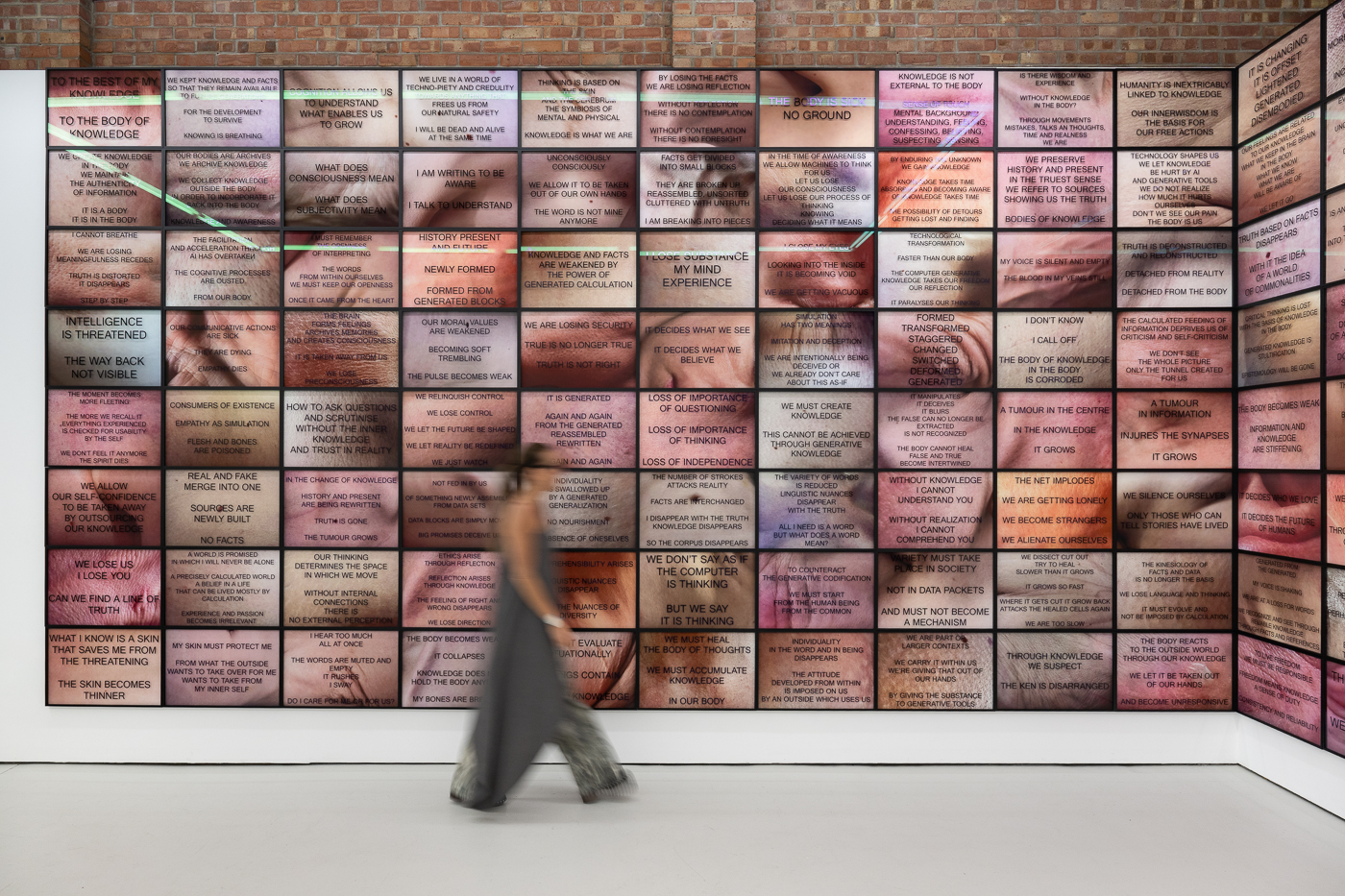Jonathan Weinel at Oxford University Press has written a paper in which Gretchen Andrew is mentioned.
By Jonathan Weinel
Steve Goodman is best known for his work DJing as Kode9 and running the Hyperdub record label, one of the pioneering forces of UK bass culture and dubstep since 2004. Through releases by Kode9 & The Spaceape, and Burial, Hyperdub captured a sound that embodied the high-pressure claustrophobia and hyper-surveillance of urban environments in the 21st Century. Seen through this dystopian lens, people are erased from the landscape and suppressed by barely perceptible sonic frequencies, and anonymous technological forces of capitalism, yet humanity bleeds through the cracks via fragments of pirate radio signals and disembodied voices.
Nøtel is a new site-specific artwork created by Lawrence Lek and Kode9, which extends some of these themes. Situated in a newly regenerated site on London City Island, the work presents a fictional showroom for a hotel of the future, which is governed through artificial intelligence (A.I.). As you enter the building, automated sales commentaries echo across the room via out-of-phase audio loops emitting from an array of loudspeakers. Nested around a glowing green zero structure, the Nøtel showroom provides several audio-visual systems including screens and virtual reality headsets, which allow you to explore the hotel via a synthetic 3D simulation. Disembodied voices explain to you how your every need will be perfectly met through the A.I. capabilities of the hotel, which will reduce unwanted human interactions to zero.
The site seems mainly empty at the moment, with vacant or unfinished properties, and some construction boards with promotional graphics featuring Photoshopped people living out idyllic lives in the imagined bustling complex. The designs tease the possibility to remove yourself from whatever real bit of London you live in, and move to a more artificial, streamlined, seductive and gentrified one. Nøtel encapsulates this vibe, which is already there, but turns the clock forward just a little, accentuating the dystopian qualities of the site.
Nøtel questions our human relationship with technology and the capitalist systems in which we are embedded. A.I. is significant in this equation because it represents a step toward an existence in which computational processes are presumed sufficiently capable of making important choices on our behalf, and are empowered to do so. Of course, A.I. could be extremely useful for our daily lives; for instance, it has been proposed to have significant benefits in healthcare. Yet some proposed uses, such as systems that automatically assess you for employment based on your social media profile, are potentially worrying.
The A.I. groups are aware of the ethical challenges that the technology presents, and many such as DeepMind are employing dedicated teams of researchers to examine the ethical implications for society. Yet one wonders to what extent ethical researchers operating within an organisation with vested interests will be able to remain impartial. In this regard, perhaps we should be looking towards artists to offer more substantial outside views to explore ideas of what A.I. could be, and what positive or negative qualities it might have.
Besides Lawrence Lek and Kode9, there are other artists already exploring questions such as these. For example, at the recent EVA London (Electronic Visualisation and the Arts) 2018 conference, several speakers gave interesting talks along these lines. New York-based digital artist Carla Gannis introduced #lucilletrackball, an “A.I. Comedian” who delivers a full stand-up comedy routine of zingers and computer-based one-liners – think geeky jokes such as “#lucilletrackball is looking for love but is not good with [email] attachments!” Along similar lines, Cecile Waagner Falkenstrøm’s FRANK is an A.I. which asks you provocative existential questions. While these artworks imagine alternative A.I. concepts, Gretchen Andrew’s insightful paper commented on the biases of search engine technologies, as she demonstrated the inherent sexism of Google Images (try searching for “girl crawling” and “boy crawling” to see for yourself – the former produces highly sexualised imagery, while the latter does not). Gretchen Andrew hacks these mechanisms with her “search engine artworks,” overriding search engine results with her own paintings.
Together with Nøtel, projects such as these present alternative viewpoints on what A.I. is and what it could be – for better or worse. These are valuable because the ‘intelligence’ part of A.I. still remains ambiguous. Often A.I. is directed to competitive, goal orientated tasks, hence you will often see the efficacy of A.I.s demonstrated through their ability to play video games. In the real world, these types of obsessive goal-orientated behaviours would probably be considered pathological if we encountered them in a person. Projects that suggest alternative ideas for A.I., such as one that can make you laugh, or annoy you by asking existential questions, may suggest more nuanced – and human – approaches to the idea of what A.I. could be.


